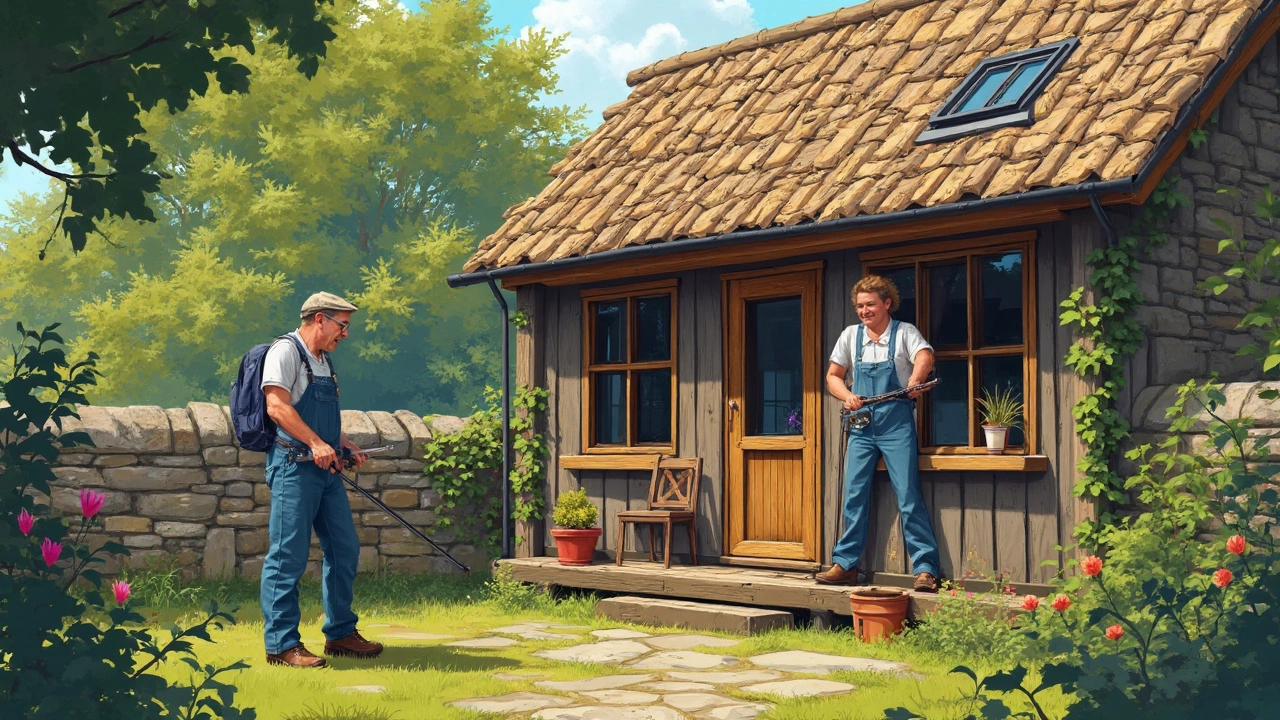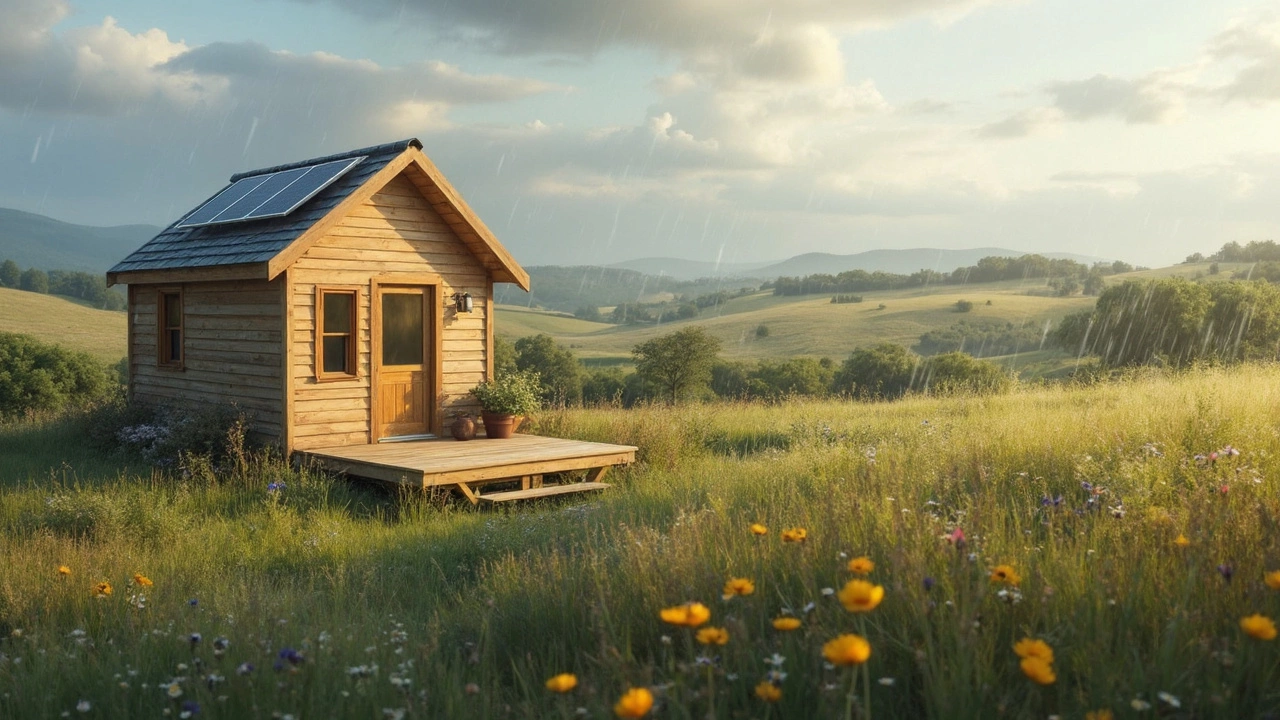Think a tiny house will only last a few years? Not true—some well-built tiny homes stick around for decades, even outlasting regular houses in some cases. The real secret? Maintenance, smart building choices, and where you decide to park.
If you’re planning to live small for the long haul, you need to know what actually makes a difference. The lifespan of a tiny house depends on things you might not expect. It's all about the frame, the roof, the way you seal the windows, and even what you do during stormy weather. Skip these details, and problems add up way faster than you'd think.
A good tiny house isn’t just lightweight and cute—it’s designed to handle real life. Mold, rot, and rust don’t care how adorable your home is. But these headaches are avoidable when you build with the right stuff and stay on top of repairs. So, how do you make sure your eco-friendly cottage doesn’t age before its time? That’s what we’re getting into.
- What Impacts a Tiny House’s Lifespan?
- Building Materials: Quality Matters
- Climate, Location, and Wear
- Simple Tips to Extend Your Tiny Home’s Life
What Impacts a Tiny House’s Lifespan?
So, you want your tiny house to last as long as possible. The truth is, the things that shorten the life of any house—weather, neglect, bad materials—can hit tiny homes even harder. Smaller spaces are less forgiving if you make mistakes, so every little detail counts.
The big factors that decide how many years you’ll get out of your tiny house are:
- Build quality: If the framing is sloppy or the seals aren’t done right, trouble shows up fast. Leaks or drafts aren’t just annoying—they lead to mold or rot.
- Materials used: Homes built with untreated wood, low-grade fasteners, or cheap roofing need repairs way sooner than those made with smart, sturdy choices. Going eco-friendly is great, but it only works if you pick materials that can handle your climate.
- Where it sits: Is your house up on a trailer, permanent foundation, or something else? Direct contact with wet ground or salty air makes stuff age faster. Movement (if you travel) can cause tiny cracks after a while, too.
- Maintenance habits: Doing regular checkups and simple fixes—like caulking, touching up paint, and cleaning gutters—will almost always double the years your tiny house can hold up.
Don’t just take my word for it. Architect Miranda Jacobs told Tiny House Magazine,
“Tiny homes can easily reach a 30 to 50 year lifespan, but only if you stay on top of maintenance. The smallest leak can be a big problem if ignored.”
Need some real numbers? Here’s what owners and pros have seen:
| Factor | Average Impact on Lifespan |
|---|---|
| Good build/materials | Often 30+ years |
| Poor build/materials | Less than 10 years |
| Lots of moisture (rain/snow) | Can cut lifespan by 30% |
| Regular, detailed maintenance | Adds 10-20 years |
The way your tiny house is designed can also shape how well it ages. Flat roofs collect water, which leads to leaks. Thin insulation means more condensation inside, which can rot wood fast. Insist on smart choices at the start—like metal roofs, water-resistant siding, and vapor barriers—if you want to win the long game.
Building Materials: Quality Matters
This is where you can’t cut corners. The stuff you build your tiny house with decides if it’ll last just five years or go strong for forty. That’s not an exaggeration—cheap plywood and low-end siding often lead to leaks, rot, and repairs you don’t want to deal with.
You want the frame to be sturdy. Most long-lasting tiny houses use steel or pressure-treated wood. Steel resists termites and mold, while pressure-treated wood fights off water damage and rot. Some builders use SIPs (structural insulated panels) for extra strength and better energy savings—those cut down on heating bills too.
Roofing is another biggie. Metal roofs last two or three times longer than asphalt shingles. They reflect sunlight, save energy, and you won’t be climbing up there to replace them every decade. Bonus: Metal roofs are usually made from recycled stuff, so they fit the eco-friendly bill.
Let’s talk siding. Cedar is naturally bug-resistant and survives wild weather for ages—think 20–30 years or more. Fiber cement is strong (grabbed from big-brand homes and now popular on tiny ones) and shrugs off rain, bugs, and even fires. Vinyl’s cheap, but it looks worn fast and can crack in the cold.
| Material | Average Lifespan (years) | Main Perk | Common Issue |
|---|---|---|---|
| Steel Frame | 50+ | Resists mold & termites | Can rust if not sealed |
| Pressure-treated Wood | 30–40 | Great against rot | Needs upkeep |
| Metal Roof | 40–70 | Eco-friendly & durable | Dents from hail |
| Cedar Siding | 20–30 | Handles rough weather | Needs sealing |
| Fiber Cement Siding | 30–50 | Fire resistant | Can crack on impact |
Here’s one more thing: Don’t ignore your windows and doors. Cheap ones leak air and water, making it tough to keep your place comfortable and mold-free. Double-pane, well-sealed windows can help your tiny house age slower, lower energy bills, and save you stress in every season.
If you can, get materials with an eco label—like FSC-certified wood or recycled steel. They last longer and are easier on the planet. Sure, the upfront cost stings a little, but you get it back in way fewer fixes down the road. Well-built basics are a game changer, not just for pocketbooks but for peace of mind.

Climate, Location, and Wear
Your tiny house’s ability to stick around has a lot to do with where you put it and what the weather throws its way. Wet climates, like the Pacific Northwest, are tough on wood siding and frames—rot creeps in fast if you don’t seal stuff up right. Live somewhere humid? Mold and mildew will find any weak point in your insulation. Meanwhile, super dry spots like southwest deserts bake paint and dry out caulk, making your walls more likely to crack or warp.
Snow isn’t just pretty; it’s heavy. If you anchor a tiny house under big drifts every winter, your roof better be built for the load. And don’t forget about sun exposure: UV rays break down sealants and weaken shingles over time, especially if you park your home without shade. Even salty ocean air on the coast eats away at metal fixtures and fasteners, making rust a real headache.
Here’s a quick look at common weather headaches and what they can do to your tiny house:
| Weather Factor | Typical Problem | Tips |
|---|---|---|
| Heavy rain & Humidity | Rot, mold, mildew | Use rot-resistant wood, keep up with paint & caulk |
| Extreme cold & Snow | Roof collapse, frozen pipes | Insulate pipes, use metal roofing, clear snow quickly |
| Hot sun & UV | Cracked siding, faded finishes | Repaint regularly, consider shade trees |
| Coastal salt air | Rust, fastener corrosion | Pick stainless or galvanized hardware, wash surfaces often |
Think neighbors matter? They do. Busy city spots mean constant traffic vibration; rural woodsy locations host termites and squirrels looking for snacks. So, picking your lot can be just as important as picking hardware.
If you’re parked permanently, make sure you have proper drainage and the home sits on blocks or a stable foundation. If you move a lot, routine checkpoint inspections stop road wear from ruining things too soon.
Simple Tips to Extend Your Tiny Home’s Life
Keeping your tiny house in top shape doesn’t need to be complicated, but it does mean staying on top of a few key habits. Most tiny home owners find that regular attention is simpler than scrambling for big fixes later. Here’s what helps your house last.
- Ventilation is everything. Tiny spaces get stuffy fast, which can mean mold if moisture builds up. Use an exhaust fan in the kitchen and bathroom, especially after cooking or showering. Even opening windows a few minutes each day makes a difference.
- Roof and siding checks. Inspect the roof twice a year for cracks, loose shingles, or blockages. Clean the gutters, too—clogs can back up rainwater and cause leaks.
- Deal with leaks ASAP. Water is your home’s worst enemy. If you spot a damp patch, fix it right away. Don’t let small leaks wait—mold and rot spread way faster in a small space.
- Protect wood surfaces. Use a quality sealant on exterior wood every 2-3 years. For eco-friendly options, plant-based oils work well and lower your environmental impact.
- Keep your trailer rust-free. If your tiny house sits on a trailer, check for rust at least once a season, especially after winter. A quick sand and repaint with rust-proof paint pays off big time.
- Watch for pests. Tiny homes are not immune to termites or mice. Try to keep food sealed, use natural deterrents like peppermint oil, and fill any gaps at the floor or corners.
If you want some real-world proof that maintenance matters, have a look at this:
| Maintenance Task | Average Added Lifespan |
|---|---|
| Gutter Cleaning (Yearly) | +5-7 years |
| Roof Inspections (Twice Yearly) | +8 years |
| Sealing Exterior Wood (Every 2-3 Years) | +10 years |
| Trailer Rust Prevention | +5 years |
Tiny Home Industry Association recommends,
"A little annual attention—especially with roofs and windows—can add over a decade to your tiny home’s useful life. Don’t wait for big repairs.”
Remember, your eco-friendly home is only as durable as you are attentive. Small steps, done often, add up to a house that’s sturdy for years.
